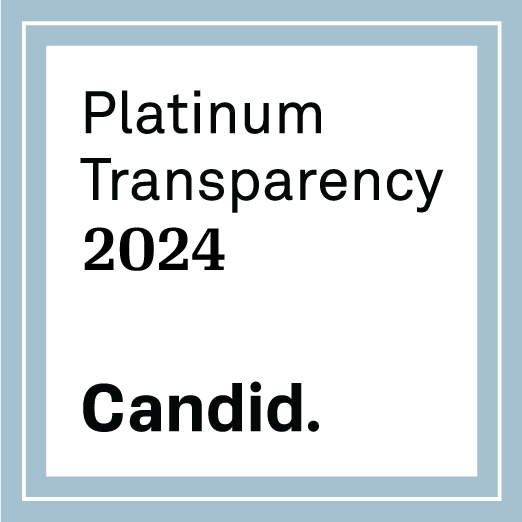|
Categories
Categories
All
Archive
Archives
July 2024
|
Without legislation to prevent it, the sunsetting of current estate tax laws at the end of 2025 will dramatically reduce the federal estate tax exemption from $13.61 million per person in 2024 to approximately $7 million in 2026 (this includes adjustments for inflation). This change would affect many high net-worth individuals and families, likely exposing many more estates to federal estate taxes.
It is impossible to predict whether or not legislation will prevent the sunset. Even so, it is important for advisors to prepare for client discussions and start considering estate planning strategies now, especially techniques that incorporate multi-generational gifts and charitable planning. Indeed, for a client who is charitably-inclined, making larger lifetime gifts to charity and arranging for charitable bequests will help reduce the client’s taxable estate because of the charitable estate and gift tax deduction. Donor-advised, field-of-interest, designated, unrestricted, and endowment funds at the Community Foundation are flexible and effective charitable recipients of both lifetime and estate gifts. For some clients, you may wish to begin exploring a comprehensive, multi-generational wealth transfer plan, potentially using key tax-planning vehicles: Charitable lead trust Charitable lead trusts (CLTs) may be particularly effective in the current environment. These trusts can provide income to your client’s fund at the Community Foundation for a set period of time, with the remaining assets passing to family members. Right now, the higher exemption allows for potentially significant initial funding of such trusts. This is because the value of the remainder interest counts toward the client’s estate and gift tax exemption. Generation-skipping trust A generation-skipping trust is an irrevocable trust that can benefit a client’s grandchildren and later generations. This trust utilizes a client’s generation-skipping transfer (GST) tax exemption (which parallels the estate and gift tax exemption). This type of trust could allow a client to take advantage of the higher exemption before it potentially decreases in 2026. It is possible under some states’ laws for these trusts to go on for many generations in a “dynasty” format, such that each generation benefits from the trust’s income (and potentially principal for health and education) without the trust’s assets being included in the beneficiaries’ estates for estate tax purposes. Multi-generational fund at the Community Foundation Alongside a charitable lead trust or generation-skipping trust, or as a standalone, a client can establish a donor-advised fund at the Community Foundation that can function much like a family foundation, with successive generations serving as advisors, or the Community Foundation stepping in after the first or second generation, to recommend grants from the fund to carry on a tradition of supporting the causes that have been most important to the client during the client’s lifetime. The team at the Community Foundation looks forward to working with you to achieve your clients’ long-term charitable goals, even in the midst of uncertainty concerning the estate tax laws. The team at the Community Foundation is a resource and sounding board as you serve your philanthropic clients. We understand the charitable side of the equation and are happy to serve as a secondary source as you manage the primary relationship with your clients. This article is provided for informational purposes only. It is not intended as legal, accounting, or financial planning advice. Your clients who are corporate executives have likely wondered at some point about the benefits of aligning their companies with philanthropy, whether specific causes or particular organizations.
In general, a community engagement strategy can be good for business, if well-executed. For example, almost half of consumers view a brand favorably when the brand supports a charitable cause. Community engagement programs can help with employee retention, too. But what are the risks involved in mixing business with charity? In the spirit of aligning doing good with doing well, some companies would love to set up their own nonprofit organizations as “charitable arms” of their enterprises. Corporate leadership may like the idea of efficiency, control, and tight alignment between the company’s offerings and the charity’s mission. For example, a company that makes swimming pools might think it’s a great idea to set up a charity to build swimming pools at community centers to give more kids access to water sports. The company would like to donate tax-deductible dollars to the charity and ask its suppliers and customers to do the same. The company’s executives would serve on the board of the charity, and the charity would purchase swimming pools from the company to carry out its mission. Is this a good idea? No. This strategy plays fast and loose with the rules. Beyond setting up an obvious conflict of interest, this practice would mean that a company effectively would be using charitable funds to benefit itself. This is not a “charitable purpose” in the eyes of the IRS and could result in the loss of the charity’s tax exemption. Plus, if the news got out about this structure, the company could suffer reputational damage. The company, its executives, and the community are all better off if the company pursues more transparent and ethical charitable strategies such as establishing a corporate fund at the Community Foundation, setting up a volunteer program for employees, establishing a matching gifts program, or aligning with wholly-independent charities on cause-related marketing partnerships. Reach out to the Community Foundation to learn more about effective corporate philanthropy strategies. We are here to help as you work with your clients to achieve their charitable goals both at home and in the workplace. The team at the Community Foundation is a resource and sounding board as you serve your philanthropic clients. We understand the charitable side of the equation and are happy to serve as a secondary source as you manage the primary relationship with your clients. This article is provided for informational purposes only. It is not intended as legal, accounting, or financial planning advice. You’re well aware that donating highly-appreciated stock to a fund at the Community Foundation offers significant advantages for your clients over making cash gifts. Communicating this benefit, however, can be challenging when clients have emotional attachments to their shares.
How can you overcome this hurdle and help optimize your clients' charitable giving strategies? Start by understanding the reasons a client might be reluctant to part with certain stocks in the first place:
Emotional ties like these can create psychological barriers to effective charitable planning. There is, however, a potential solution that can satisfy both your clients' emotional needs and their philanthropic goals: The client donates shares of the highly-appreciated, emotionally significant stock to their fund at the Community Foundation, and then the client purchases shares of the same stock in their personal investment portfolio. Here’s why this can be such an effective strategy:
As you share this strategy with a client, be sure to acknowledge the emotional value of the stock and emphasize the client’s opportunity to maintain ownership in the company. Building on this, you can show the client how the tax benefits of giving stock allow the client to make an even bigger difference than if they’d given cash instead. As always, the Community Foundation can help you assist your clients with selecting the best assets to give to charity, evaluate tax implications of various giving strategies, and structure gifts to achieve strong community benefit. We look forward to a conversation! The team at the Community Foundation is a resource and sounding board as you serve your philanthropic clients. We understand the charitable side of the equation and are happy to serve as a secondary source as you manage the primary relationship with your clients. This article is provided for informational purposes only. It is not intended as legal, accounting, or financial planning advice. As your go-to resource for charitable giving techniques, the Community Foundation team pays close attention to best practices in addressing the broad range of your clients’ charitable intentions to support both near-term and long-term community needs. This includes tracking legal developments that may impact philanthropy broadly, impact specific giving vehicles, and everything in between.
For example, we pay attention to the IRS’s plan to increase audits of wealthy taxpayers so that our team is better positioned to help you and your clients understand the requirements of valuing gifts to charity. And we’re gearing up to help you and your clients incorporate charitable giving vehicles as a way to blunt the potential impact of the anticipated estate tax exemption sunset. And we’re watching the IRS scrutinize aggressive techniques using annuities inside charitable lead trusts. And so much more. Another issue we’re watching closely is the latest news on the IRS’s proposed regulations of donor-advised funds. We’ve studied the transcript from the public hearings in early May, and it was inspiring to see so many community foundation leaders share their recommendations urging that any new regulations not disrupt the positive and productive working relationships between community foundations and advisors who are helping their clients achieve philanthropic goals. At this point, no one can predict what will happen with the proposed regulations - whether and how they will be revised or when they might become effective, if ever. As always, our team is staying on top of the issues. We’ll keep you informed. Of course, a donor-advised fund is just one of many types of funds your clients can establish at the Community Foundation. We offer donor-advised funds, endowment funds, field-of-interest funds, scholarship funds, designated funds, and a wide range of planned giving and legacy options for clients who want to invest in the community’s long-term needs. The donor-advised fund is popular because it allows your client to make a tax-deductible transfer of cash or marketable securities that is immediately eligible for a charitable deduction. Then, the client can recommend gifts to favorite charities from the fund to meet community needs as they emerge. What’s especially rewarding for our team is to work with you and your clients to explore a diversified portfolio of giving vehicles. It’s possible that a client's portfolio would include a donor-advised fund, and perhaps also one or more of a variety of other tools, such as a bequest, unrestricted gift, charitable trust, and endowment gift. Above all, we are confident in our ability to continue to work collaboratively with you and other advisors for years to come to help fulfill your clients’ philanthropic wishes. The team at the Community Foundation is a resource and sounding board as you serve your philanthropic clients. We understand the charitable side of the equation and are happy to serve as a secondary source as you manage the primary relationship with your clients. This article is provided for informational purposes only. It is not intended as legal, accounting, or financial planning advice. It’s relatively straightforward to see how philanthropy figures into the financial and estate plans you build for individuals and families. After all, many of these clients are already supporting their favorite community causes, and it’s your job to make sure they know about all the options for structuring both their near-term and long-term plans to give to charity using techniques that achieve both philanthropic goals and tax goals. The Community Foundation works with attorneys, accountants, and financial advisors every single day to help meet clients’ needs.
What you might not always consider, though, is that many of your clients are executives in companies whose leaders want the company itself to lean into charitable giving. That’s why it’s wise to be aware of best practices in corporate philanthropy and know the ways the Community Foundation can help. For example, establishing a corporate donor-advised fund - essentially functioning and named as a corporate foundation - helps corporate executives organize the company’s giving in a convenient, 501(c)(3)-qualified structure, avoiding the time and expense that would be required for the company to establish and maintain a separate foundation entity. The company can fund the corporate donor-advised fund each year (especially in really good years!), thereby organizing charitable donations to a wide range of nonprofits through a single source of funds. This structure can help maintain historical corporate giving levels even when the company experiences a down year. What’s more, many companies coordinate with community foundations to offer donor-advised funds to employees, especially to take advantage of company stock gifts. A program like this is a perk for employees who’ll enjoy organizing their giving and using the Community Foundation’s many tools and services. The program also helps inspire employees to get more involved in the community, which is good for everyone. In many instances, the Community Foundation takes on a back office role for a company’s matching gifts program, grant administration, and giving strategy. For example, the Community Foundation can help guide corporate leadership in creating and administering a program that matches employees’ volunteer time with dollars. In addition, the Community Foundation can help a company create and implement a strategy for responding to and evaluating funding requests to align with the company’s goals for supporting and prioritizing causes. Finally, the Community Foundation can help establish and administer employee giving and disaster relief campaigns. The Community Foundation’s tools to receive and process donations can help a company and its employees respond quickly and meaningfully to disasters and other urgent community needs. Note that many companies appreciate the community’s foundation’s infrastructure, reporting practices, and compliance protocols to ensure that all tax laws and other IRS requirements are met. Instead of the company bearing these responsibilities, it’s the Community Foundation’s job. Corporate executives regularly view the relationship with the Community Foundation as a very wise outsourcing move. The team at the Community Foundation looks forward to working with you and your clients who are corporate executives, or even local small business owners, who are excited to give back to the community where they’ve built businesses and developed lasting relationships with employees and customers. The team at the Community Foundation is a resource and sounding board as you serve your philanthropic clients. We understand the charitable side of the equation and are happy to serve as a secondary source as you manage the primary relationship with your clients. This article is provided for informational purposes only. It is not intended as legal, accounting, or financial planning advice. At the end of 2024’s first quarter, an estimated 485,000 Americans could count themselves among the so-called “401(k) millionaires,” meaning the balance in their employer-sponsored retirement plans has reached the $1 million level. Thanks in part to stock market rallies during the first part of the year, that’s a larger number than ever before. Many of these 401(k) accounts will be rolled over into IRAs after retirement and the assets will continue to grow.
With so many of your charitably-inclined clients holding large sums of money in 401(k)s and IRAs, now is an important time for a brief refresher course on the benefits of deploying these accounts toward achieving clients’ philanthropic goals. Indeed, although a charitable bequest of any type of property can help achieve a client’s estate planning and legacy goals, retirement accounts are especially powerful. When your client names a public charity, such as a donor-advised or other fund at the Community Foundation, as the beneficiary of a traditional IRA or qualified employer retirement plan, your client achieves extremely tax-efficient results. Here’s why:
So, if your client is deciding how to dispose of stock and an IRA in an estate plan and intends to leave one to children and the other to charity, leaving the IRA to charity and the stock to children is a no-brainer. Remember, the client’s stock owned outside of an IRA gets the “step-up in basis” when the client dies, which means that the children won’t pay capital gains taxes on the pre-death appreciation of that asset when they sell it. Speaking of savvy giving techniques using IRAs, a client who is 70 ½ or older can make tax-efficient gifts directly from an IRA to a qualified charity (including certain types of funds at the Community Foundation), up to $105,000 per year! This is known as a “Qualified Charitable Distribution.” The Community Foundation is always happy to work with you to ensure that your clients are maximizing their assets to fulfill their charitable giving goals, both during their lives and through legacy gifts. We look forward to the conversation! The team at the Community Foundation is a resource and sounding board as you serve your philanthropic clients. We understand the charitable side of the equation and are happy to serve as a secondary source as you manage the primary relationship with your clients. This article is provided for informational purposes only. It is not intended as legal, accounting, or financial planning advice. Charitable Giving in an Election Year
While charitable giving historically has been resilient in the midst of elections, it’s worth bearing in mind that some sources predict that political donations will eat into your clients’ budgets for charitable gifts. As you talk with clients about their philanthropy plans for 2024, you might pass along these trends so your clients can factor into their target gift amounts the potentially greater demand for funding community organizations. This is also a good time to remind clients that political donations are not tax deductible. This may seem elementary, but it still trips up some people who don’t track the rules closely. Rounding Up at the Register Although the majority of your clients’ charitable giving is likely strategic, including giving through a donor-advised or other type of fund at the Community Foundation, there are definitely exceptions in any household. One of those exceptions for many of your clients may be a form of giving called “checkout charity.” The spare change really does add up–to the tune of $749 million nationwide in 2022 alone! Legal Pitfalls for Nonprofits As you counsel your clients who are on the boards of nonprofit organizations, or perhaps even lead them, be aware of a handful of legal issues that are surfacing as areas of concern, including the always-relevant topics of employees versus independent contractors and unrelated business activities, as well as emerging issues related to artificial intelligence. The team at the community foundation is a resource and sounding board as you serve your philanthropic clients. We understand the charitable side of the equation and are happy to serve as a secondary source as you manage the primary relationship with your clients. This article is provided for informational purposes only. It is not intended as legal, accounting, or financial planning advice. When your client is getting ready to make a contribution to a fund at the Community Foundation or other charity, remind them not to automatically reach for the checkbook! Here are other (and typically more tax-savvy) options to consider.
Marketable Securities Gifts of long-term appreciated stock to a donor-advised or other type of fund at the Community Foundation is always one of the most tax-savvy ways to support favorite charitable causes because capital gains tax can be avoided. Gifts of publicly-traded stock, for example, are easy to transfer to a fund. The Community Foundation team can provide you and your clients with transfer instructions to make the process simple. As is the case with a cash gift, the Community Foundation will provide a receipt for tax purposes, and the gift of stock will be valued at the shares’ fair market value on the date of transfer. When the Community Foundation sells the shares, the proceeds flow into the client’s fund without any reduction for capital gains taxes. This is because the Community Foundation is a 501(c)(3) charitable organization and therefore does not pay income tax. That would not have been the case, however, if the client had sold the stock first and then transferred the proceeds to a fund at the Community Foundation; the client would owe capital gains tax on the sale. Especially in cases where the client has held the stock a long time and it’s gone up significantly in value, the capital gains hit can be big. Closely-Held Business Interests The Community Foundation team is happy to work with you and your client to explore how the client might give shares of a closely-held business to a fund at the Community Foundation. Not only will transfers be eligible for a charitable deduction during the year of transfer (and at fair market value if the shares are held for more than one year), but also these gifts could potentially reduce income tax burdens triggered upon a future sale of the business. Be sure to talk with our team well before any potential sale is in the works; otherwise, you could lose out on tax benefits. Gifts of closely-held business interests are powerful but can be tricky to administer. QCDs from IRAs As always, keep in mind that the Qualified Charitable Distribution (“QCD”) is a very smart way to support charitable causes. If your client is over the age of 70 ½, the client can direct up to $105,000 (in 2024) from an IRA to certain charities, including a field-of-interest, designated, unrestricted, or scholarship fund at the Community Foundation. If your client is subject to the rules for Required Minimum Distributions (RMDs), QCDs count toward those RMDs. That means your client avoids income tax on the funds distributed to charity. Our team can work with you and your client to go over the rules for QCDs and evaluate whether the QCD is a good fit. Real Estate Your client’s fund at the Community Foundation can receive a tax-deductible gift of real estate, such as farmland or commercial property, in a variety of ways. An outright gift is always an option; lifetime gifts of real estate held by the client for more than one year are deductible for income tax purposes at 100% of the fair market value of the property on the date of the gift, which also avoids capital gains tax and reduces the value of your client’s taxable estate. Other ways to give real estate include a bargain sale or a transfer to a charitable remainder trust which produces lifetime income for the client and the client’s family. Life Insurance Don’t overlook life insurance as an effective charitable giving tool, whether by naming a client’s fund at the Community Foundation as the beneficiary or, in the case of whole life policies, naming the fund as beneficiary and transferring the policy itself. If your client transfers a policy, the client may be able to make annual, tax-deductible contributions to the Community Foundation to cover the premiums. Other “Alternative” Assets The Community Foundation is happy to work with you and your clients to explore options for giving other non-cash assets to funds at the Community Foundation, including:
We look forward to working with you to explore all the options! The team at the community foundation is a resource and sounding board as you serve your philanthropic clients. We understand the charitable side of the equation and are happy to serve as a secondary source as you manage the primary relationship with your clients. This article is provided for informational purposes only. It is not intended as legal, accounting, or financial planning advice. The Community Foundation is committed to providing timely updates on legal and policy developments to help you and other professionals who advise philanthropic clients stay on top of best practices in charitable planning. In that spirit, donor-advised funds and the rules governing these vehicles are topics that are popping up more frequently in financial and even mainstream media. Our team is closely watching these regulatory developments.
As background, in November 2023, the Internal Revenue Service issued proposed regulations that would change the way donor-advised funds are defined and how they operate. Especially leading up to the May 6, 2024 public hearings, the proposed regulations have created quite a buzz. If you’d not yet heard about the proposed regulations, the April 19, 2024 letter to Treasury Secretary Janet Yellen, signed by 33 members of Ways and Means, might have grabbed your attention. The letter lays out concerns that “these regulations could have the unintended consequence of impeding charitable giving in our communities, particularly at our local community foundations.” You’ll hear from us when (and if) the proposed regulations, or some version thereof, go into effect and what to do about it. As you track the issue, however, it’s important to remember that a donor-advised fund is just one of many types of funds your clients can establish at the Community Foundation. Consider:
We look forward to helping you serve your charitable clients regardless of where the proposed regulations ultimately land. And we’ll keep you posted! The team at the community foundation is a resource and sounding board as you serve your philanthropic clients. We understand the charitable side of the equation and are happy to serve as a secondary source as you manage the primary relationship with your clients. This article is provided for informational purposes only. It is not intended as legal, accounting, or financial planning advice. Getting a jump on a future “to do” list is always such a good feeling. The team at the Community Foundation can help you with your clients’ long-term charitable giving plans by putting in place the structures to receive bequests decades from now.
Consider a case where you’re finalizing an estate plan for a client who would like to leave bequests to multiple charitable organizations, but the identity of those specific organizations may be a moving target over the years because of the client’s evolving level of engagement with various charities as a donor, volunteer, or board member. In other words, this client likely will want to make small changes to the estate plan’s provisions for charitable giving but leave everything else as is. For example, a client’s trust could be drafted to provide that 10% of the remaining estate be divided equally among five charities, which of course could be listed in the trust document. But what if, a few years from now, the client wants to add another charity to that list? Even a small change like this would require an amendment, which can be time-consuming for both attorney and client. Instead, the client’s trust document could name a fund at the Community Foundation as the beneficiary of 10% of the remaining estate. Then, the client can work with the Community Foundation to draft a fund agreement that lists the charities that will share the 10%. When the client wants to add new charities or switch out charities from the list, the client can reach out to the Community Foundation and execute simple documentation of the client’s updated intent for the fund. This process is fast and simple, and it allows clients to ensure that their bequests are in line with ever-changing needs in the community. In some cases, the client may not intend to use the fund during their lifetime. That’s perfectly fine; the Community Foundation can establish a fund to sit dormant and receive assets only after the client passes away. Your client can still name the fund whatever they’d like, and the fund agreement can be modified anytime before the client’s death. Please reach out to the Community Foundation to learn how funds and other planning tools can help your clients achieve their charitable goals both during their lifetimes and beyond. The team at the Community Foundation is a resource and sounding board as you serve your philanthropic clients. We understand the charitable side of the equation and are happy to serve as a secondary source as you manage the primary relationship with your clients. This article is provided for informational purposes only. It is not intended as legal, accounting, or financial planning advice. No matter how frequently you remind clients to pause before they automatically reach for the checkbook to make their charitable gifts, many clients still give cash! As an attorney, accountant, or financial advisor, you are well aware that giving long-term appreciated assets is often one of the most tax-savvy ways your clients can support their favorite charities. Nevertheless, it’s sometimes hard to convey that message to clients with words that stick. Next time, consider using illustrations to help clients see the benefits.
Below are three simple examples* to help you show your clients the benefits of giving appreciated stock. Sally and Bob Jones give $100,000 Sally and Bob Jones plan to give $100,000 to their donor-advised fund at the Community Foundation to organize all of their giving for the calendar year. Let’s assume Sally and Bob have a combined adjusted gross income of $600,000, which lands them in the 35% federal income tax bracket. If they gave $100,000 in cash to their donor-advised fund, they could realize an income tax savings, potentially, of $35,000. What if instead of giving cash, Sally and Bob gave highly-appreciated, publicly-traded stock, valued currently at $100,000, to their donor-advised fund. Let’s assume they’ve been holding the stock for many years, and the shares have a cost basis of $20,000. Not only are Sally and Bob eligible for a potential income tax deduction that will save them up to $35,000, but they have also potentially avoided $12,000 of capital gains tax that they would have owed if they’d sold the stock (using a long-term capital gains tax rate of 15%). So, it’s easy to see why Sally and Bob should consider giving highly-appreciated stock instead of cash. Jenny and Joe Smith give $1 million Jenny and Joe Smith plan to give $1 million to community causes this year. They’ll do that by adding $500,000 to their donor-advised fund at the Community Foundation, which in turn they will use to support their favorite charities. They’ll also be making a $500,000 gift to an unrestricted fund at the Community Foundation to help address the region’s greatest needs for generations to come. Let’s assume that Jenny and Joe are in the highest federal income tax bracket because they earn multiple seven figures. If they were to give $1 million in cash, they could save, potentially, up to $370,000 in income tax. If they gave publicly-traded stock instead of cash, assuming a $200,000 cost basis in stock valued currently at $1 million, they would still potentially save up to $370,000 in income tax, and they would also potentially avoid $160,000 in capital gains tax (based on a long-term capital gains tax rate of 20%). Tiffany and Brett Thomas give $5 million Tiffany and Brett Thomas plan to give a target amount of $5 million to charity as the cornerstone of their overall philanthropy plan. They would like to use publicly-traded stock that they’ve held for many years, valued currently at $5 million. They would love to receive a lifetime income stream from these assets, so that the remaining assets will flow to their fund at the Community Foundation after their deaths. In this case, you’ll explore setting up a charitable remainder trust that pays out an income stream to Tiffany and Brett while they are both living and then to the survivor for the survivor’s lifetime. Let’s assume that TIffany and Brett are both 55 years old. And let’s assume that the stock has a very low cost basis–just $500,000–because the Thomases have held it for so long. Depending on the IRS’s applicable rates, and assuming a 5% annual payout rate paid at the end of each quarter, here’s an approximate tax result if you worked with the Community Foundation to help Tiffany and Brett establish a charitable remainder trust:
Following the death of the survivor of Tiffany and Brett, the remaining assets will flow to the Thomas Family Fund at the Community Foundation, which Tiffany and Brett have already established and which, upon their deaths, will split equally into two funds. The first fund will be a donor-advised fund for which their children will serve as advisors, and the second fund is an unrestricted endowment fund to support the Community Foundation’s priority initiatives in perpetuity. Of course, no client’s circumstances will exactly match those of Sally and Bob, Jenny and Joe, or Tiffany and Brett. The net-net here, though, is that we are happy to discuss the various tax-savvy options for charitable giving in any client situation. Please reach out. It is our honor to help you serve your charitable clients. *These examples are for illustration purposes only. Every client’s situation is different, and, therefore, the tax strategy and tax impact will be different for each client. For example, these illustrations are based on federal income tax rates only, and you’ll need to evaluate, among many other factors, the impact of state taxes and potential tax credits. The team at the community foundation is a resource and sounding board as you serve your philanthropic clients. We understand the charitable side of the equation and are happy to serve as a secondary source as you manage the primary relationship with your clients. This article is provided for informational purposes only. It is not intended as legal, accounting, or financial planning advice. On an ongoing basis, the team at the Community Foundation tracks legislation, legal developments, trends, news, and innovative strategies for all types of charitable giving so that we can keep fund holders and their advisors up to date.
Recently, donor-advised funds have been the subject of conversation within financial and estate planning circles, as well as a trending topic in philanthropy, related to a set of proposed regulations issued by the IRS late last year. The IRS has scheduled public hearings on the proposed regulations, set for May 6, 2024. As just one of many types of funds your clients can establish at the Community Foundation, the donor-advised fund is popular because it allows your client to make a tax-deductible transfer of cash or marketable securities that is immediately eligible for a charitable deduction. Then, the client can recommend gifts to favorite charities from the fund to meet community needs as they emerge. Our team has compiled a list of articles we’d recommend if you’d like to dig deeper into the topic of donor-advised funds.
While these materials are useful to gain an understanding of the current situation, at this point, no one can predict what will happen with the proposed regulations--whether and how they will be revised or when they might become effective, if ever. As always, our team is staying on top of the issues. We’ll keep you posted! The team at the Community Foundation is a resource and sounding board as you serve your philanthropic clients. We understand the charitable side of the equation and are happy to serve as a secondary source as you manage the primary relationship with your clients. This article is provided for informational purposes only. It is not intended as legal, accounting, or financial planning advice. Just as each of your clients has a unique estate plan and financial plan to meet the client’s particular situation and goals, each of your philanthropic clients needs a unique charitable giving plan. For example, for some clients, giving shares of highly-appreciated stock consistently every year to their fund at the Community Foundation makes the most sense for their charitable goals and their mix of assets. For other clients, leaving a bequest to the Community Foundation to support specific areas of interest is the best fit for the client’s financial situation and community priorities.
The Community Foundation offers charitable giving vehicles to meet a wide range of clients’ needs. In many cases, a single client can benefit from setting up multiple funds of different types. Here’s a quick primer on a few of the most popular fund types. Donor-advised Fund A donor-advised fund enables your client to establish a specific account for charitable giving. Your client makes tax-deductible contributions of cash (or, ideally, stock or other highly-appreciated assets) to the fund, and then recommends grants to favorite charities. Unrestricted Fund The Community Foundation has its finger on the pulse of the community’s most pressing issues. An unrestricted fund gives your client the opportunity to support community needs that can’t be identified until the future. One of the biggest benefits of a community foundation is its perpetual structure that allows clients and their families to offer support to nonprofits that evolves over time as priorities in the region shift. Field-of-interest Fund Clients who want to target their giving to specific areas of community need (such as education, health, environment, or the arts) can set up a field-of-interest fund to establish parameters for grant making under the ongoing guidance and expertise of the Community Foundation’s staff. Designated Fund A designated fund allows a client to direct giving to a specific agency or purpose. Over time, the Community Foundation's staff manages the distributions from the fund according to the terms established by your client. Organizational Fund An organizational or agency fund is similar to a designated fund, except in the case of an agency fund, the source of the initial contribution is the beneficiary nonprofit organization itself, not a donor or donors as is the case with a designated fund. If your client serves on boards of directors of charities, they’d likely be interested in learning more about agency funds. Indeed, if you represent nonprofit organizations and their board members in your practice, it’s helpful to keep in mind that organizations frequently establish agency funds at the Community Foundation to set aside endowment reserves or rainy day funds. The team at the Community Foundation is adept at navigating the specific accounting standards that are unique to this type of arrangement. Scholarship Fund Clients can set up funds to support students’ educational pursuits based on the parameters and application requirements they outline with help from the experts at the Community Foundation. Here’s a pro tip: If you represent clients who are age 70 ½ and older, consider recommending a Qualified Charitable Distribution from a client’s IRA to a fund at the Community Foundation. All of the fund types noted above are eligible recipients, with the exception of only the donor-advised fund. We look forward to working together to discover the type of fund (or funds!) at the Community Foundation that could be a good fit for each client’s unique charitable giving needs. The team at the Community Foundation is a resource and sounding board as you serve your philanthropic clients. We understand the charitable side of the equation and are happy to serve as a secondary source as you manage the primary relationship with your clients. This article is provided for informational purposes only. It is not intended as legal, accounting, or financial planning advice. Tax time has its silver linings! Going over a tax return with a client helps start a productive conversation about ways to plan gifts to charity more effectively. As you scan 2023’s charitable contributions, talk with the client about whether those charitable gifts were made with cash or with other assets and then steer the conversation toward discussing the most effective assets to give to charity during 2024 and beyond.
Here is a four-point checklist that can help you advise your clients about the range of charitable giving options.
Opening up the full range of charitable giving options for a client can help you structure a holistic estate and financial plan that meets the client’s objectives for family wealth, philanthropy, and tax effectiveness. Reach out anytime to the team at theCommunity Foundation to discuss techniques and strategies. The team at the Community Foundation is a resource and sounding board as you serve your philanthropic clients. We understand the charitable side of the equation and are happy to serve as a secondary source as you manage the primary relationship with your clients. This article is provided for informational purposes only. It is not intended as legal, accounting, or financial planning advice. Your charitably-minded clients certainly have no shortage of options for their philanthropic dollars. Many clients use their donor-advised funds, for example, at the Community Foundation to support favorite charities across the country, including alma maters, organizations in the communities where they’ve lived in the past or have a second home, or charities in communities where their grown children are now living.
Many clients, though, are also deeply committed to the local community where they’re living now, where they’ve raised their children, and where they’ve built a business. That’s why it’s helpful to remind clients that they can reach out to the team at the Community Foundation when they want to make sure their dollars are making the biggest difference possible, right here in our community. Indeed, local giving satisfies many clients’ commitment to “take care of our own.” The unfortunate steady flow of crises and even disasters, coupled with decreasing state and federal funding to local nonprofits, means that philanthropy is playing an increasingly important role in our region. The Community Foundation, through its wide variety of fund types available to your clients (including endowment funds to support the community in perpetuity), can help your clients achieve their goals for local support, whether that takes the form of disaster recovery, supporting families in need, funding critical workforce development, or paving the way for historic preservation initiatives. The Community Foundation team is always happy to provide insight into the challenges our community is facing right now and which organizations are delivering services to alleviate those needs so that your clients can provide immediate support through their donor-advised funds. In addition, an unrestricted fund may be a good fit for clients who want to improve lives, right here in this community, for generations to come, whatever challenges our region may face at any given point in time. An unrestricted fund may be particularly compelling for your clients who are 70 ½ or older. These clients may be eligible to make annual distributions up to $105,000 per spouse from their IRAs directly to an unrestricted fund at the Community Foundation. This transfer is called a “Qualified Charitable Distribution,” or “QCD.” Not only do QCD transfers count toward satisfying Required Minimum Distributions, but your client also avoids the income tax on those funds. Furthermore, those assets are no longer part of the client’s estate upon death, so the client can avoid estate taxes, too. Please reach out to the team at the Community Foundation for more information on how your clients can support both current and future local needs, and also meet their own financial, tax, and generational legacy goals. The team at the Community Foundation is a resource and sounding board as you serve your philanthropic clients. We understand the charitable side of the equation and are happy to serve as a secondary source as you manage the primary relationship with your clients. This article is provided for informational purposes only. It is not intended as legal, accounting, or financial planning advice. |
Visit Us |
Contact Us
Office Hours: Monday - Thursday, 10am - 4pm
Remote/Virtual Hours: Friday, 10am - 4pm Meetings by Appointment |
Accredited by the National Standards for U.S. Community Foundations®
© Community Foundation of Grand Forks, East Grand Forks & Region. All rights reserved.
Privacy Statement | EIN: 45-0448088

















